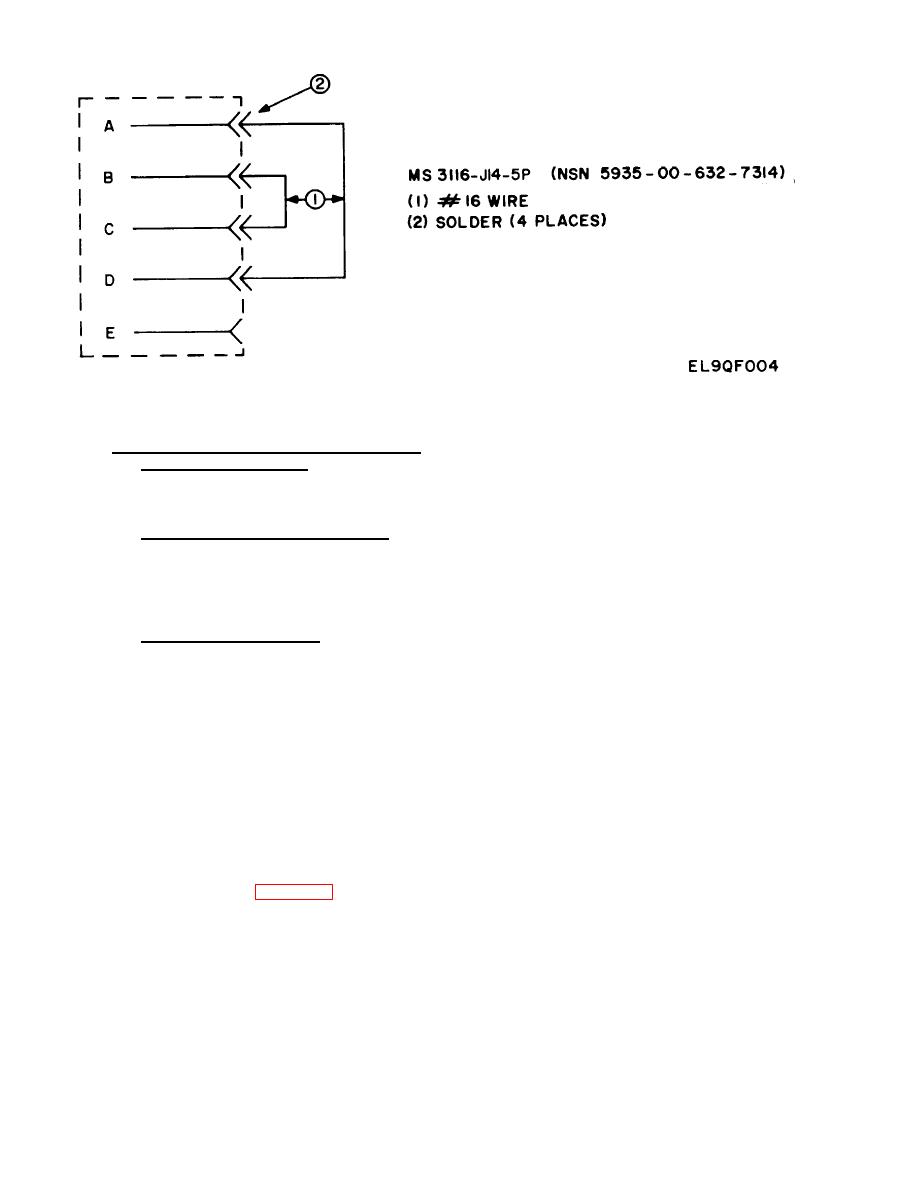 |
|||
|
|
|||
|
Page Title:
Figure 4-1. Jumper Plug Fabrication |
|
||
| ||||||||||
|
|
 TM 11-6140-224-13&P
Figure 4-1. Jumper Plug Fabrication
b.
Charging with G-76/G Handcranked Generator.
(1) Temperature above 50F. Connect cable from G-76/G to MS3112E-14-55 connector on side of battery. Crank
generator at a speed sufficient to cause 2 ampere indicator light on generator to turn on. Continue cranking at 2 ampere
rate until load suddenly lowers due to opening of pressure switch within the battery. The 3A light on generator will be
extinguished and will not turn on, no matter how fast the generator is cranked. Battery is now fully charged.
(2) Temperature between 30 and 500F. Connect cable from G-76/G to MS3112E-14-55 connector on side of
battery. Crank generator at a speed sufficient to cause 2 ampere indicator light on a generator to turn on. Continue
cranking until G-76/G light goes out and stays out irrespective of charging speed. This will indicate that the battery is fully
charged. At temperatures between 300 and 500F, the load on the generator may not change significantly when the
pressure switch opens because the heater circuit will start drawing power after the battery is fully charged. The G-76/G
does not provide any indication of the current in the heater circuit. The battery may also be charged intermittently as above.
(3) Temperatures below 30F. At temperatures much below 300F intermittent charging is not recommended
because a significant amount of cranking energy will be required to bring the battery to 30F before high rate charging will
start. The suggested procedures for minimum cranking time and effort is as follows:
(a) Start with a battery that is almost completely discharged.
(b) Keep battery in heated area if possible.
(c) Wrap battery with insulating material such as blanket, sleeping bag, coat, etc. to prevent heat loss.
(d) Crank at highest sustained rcte possible, use a 2 person cranking to minimize exposure time and resulting
heat loss.
For each 10F the battery is below 30F, 2 minutes of heating at 130 watts, or 3 minutes at 3 ampere (90 watts),
will be required before high rate charging will start. Thus, with the battery at -200F, approximately 10-15 minutes of heating
will be required to bring it to 30F where high rate charging can begin. When high rate charging starts, the current will be
automatically switched by G-76/G generator from the heater to the battery. At this time the 2 ampere light will go on if the
generator is being cranked at a fast enough rate. If the external temperature is low, the heater will switch on for 2 to 3
minute periods every 5 to 10 minutes during the charge, extinguishing the 2 ampere light on the generator while still
maintaining a load on the generator. Total charge time at a 90 watt power input level will vary from about 45 minutes at
200F to 65 minutes at -25F. Figure 4-2 is a typical curve showing the on-off heating characteristics at a fixed cranking
speed.
4-4
|
|
Privacy Statement - Press Release - Copyright Information. - Contact Us |